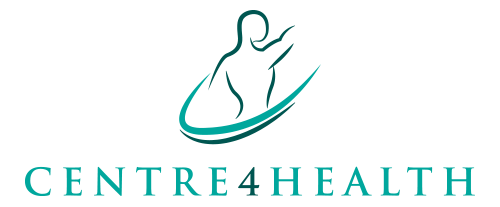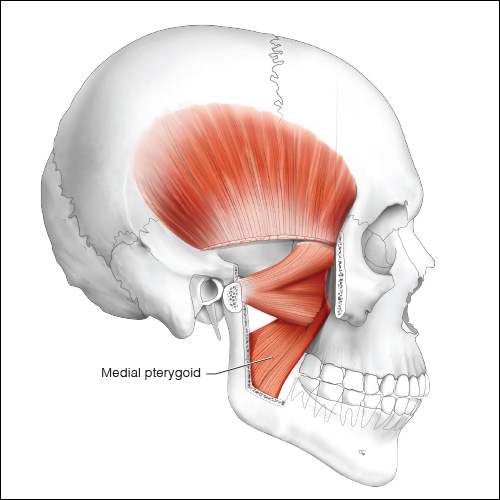The medial pterygoid is a thick, quadrilateral muscle. It arises from the medial surface of the lateral pterygoid plate and the grooved surface of the pyramidal process of the palatine bone; it has a second slip of origin from the lateral surfaces of the pyramidal process of the palatine and tuberosity of the maxilla. Its fibers pass downward, lateralward, and backward, and are inserted, by a strong tendinous lamina, into the lower and back part of the medial surface of the ramus and angle of the mandible, as high as the mandibular foramen.
Origin: Deep head: medial side of lateral pterygoid plate behind the upper teeth – superficial head: pyramidal process of palatine bone and maxillary tuberosity
Insertion: Medial angle of the mandible
Artery: Pterygoid branches of maxillary artery
Nerve: Mandibular nerve via nerve to medial pterygoid
Action: Elevates mandible, closes jaw, helps lateral pterygoids in moving the jaw from side to side
How to fee l the Medial Pterygoid. In order to feel the muscle and to perform the self-massage, you need to reach quite deep into your mouth which could evoke the pharyngeal reflex. Slow approach helps to avoid that. Grasp the inside of your lower jaw with the index finger of your opposite hand. Your index finger should now be below your molars.






